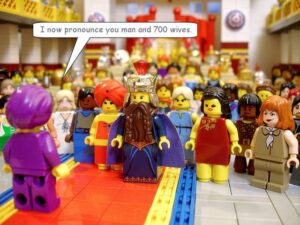Chukas 2022: NIKE, The Black Hole & A Depressing Read
by devadmin | July 7, 2022 9:14 pm
Raboyseyee and Ladies,
A big mazel tov-shout to our cousins Shaindy and Mendy Handler upon the bar mitzvah last shabbis of their dear son Sholom. Mazel tov to the entire extended Handler and Berkovits mishpocho. You surely will have continued nachas from Sholom who will one day soon, do something, or invent something big. The heylige Ois and eishes chayil were delighted to have been in attendance.
NIKE, The Black Hole, & A Depressing Read:
Long before Nike, which in 1988 launched its JUST DO IT campaign, the RBSO, in the year 2448 was mamish the first to so command. In the year 2450 He gave the Yiddin a new JUST DO IT command when He instructed the Yiddin regarding the red heifer. More on that below.
 A good director knows just how to end a TV show, movie, or -in these days- a series on Netflix, or any of the other myriad streamers. In the end, the story’s hero or heroine somehow survive, live happily ever after, and the viewing audience go to bed happy raving about the show to their friends. Grada, just a few weeks back while cruising the Danube, one woman -let’s call her Rita- suggested a show the heylige Ois and eishes chayil are deeply invested in and mamish enjoying. Ober an unhappy ending -of every variety, if you chap- where the hero or heroine don’t make it, leaves people depressed, upset and mamish tzibrochen (crushed). We get angry at the director and want the script re-written. And because we have no control, we instead pan and badmouth the show and tell our friends that the show isn’t worth watching. Ober, what’s all that got to do with this week’s parsha?
A good director knows just how to end a TV show, movie, or -in these days- a series on Netflix, or any of the other myriad streamers. In the end, the story’s hero or heroine somehow survive, live happily ever after, and the viewing audience go to bed happy raving about the show to their friends. Grada, just a few weeks back while cruising the Danube, one woman -let’s call her Rita- suggested a show the heylige Ois and eishes chayil are deeply invested in and mamish enjoying. Ober an unhappy ending -of every variety, if you chap- where the hero or heroine don’t make it, leaves people depressed, upset and mamish tzibrochen (crushed). We get angry at the director and want the script re-written. And because we have no control, we instead pan and badmouth the show and tell our friends that the show isn’t worth watching. Ober, what’s all that got to do with this week’s parsha?

Raboyseyee, welcome to Parsha Chukas where -mamish in middle of the parsha- we begin losing central and beloved characters, those we have come to adore and respect. Not one, not two, but three we have come to know and love, will either die or be sentenced to death. There’s more: before the parsha is over, we will lose a few more thousand Yiddin as the RBSO continues to thin out the population of those He intends not to bring over to the promised land. Guess what? Many more will die next week after entanglement -of a sexual nature- with Moabite shiksas. Of course, you’ll be reading that with great excitement. The bottom line: Parshas Chukas does not provide for a happy middle or ending.
And we ask azoy: is this the summer reading you had in mind? Efsher we should re-read the love story of Yaakov and Rochel? Should we efsher skip over this parsha? That’s perhaps what you’ll feel like during kriyas haToirah this shabbis, unless of course, you break out early to the kiddish club (which, I understand, a healthy number do regularly, oy vey). Ober, it’s the Ois’s tafkid (mission) to teach the heylige Toirah as it is, in the order given, and as it was mistama given over to Moishe Rabaynu. Most of Chukas is mamish a downer and if you halt kup for just a few minutes more, you’ll soon agree.
With the exception of the Poro Aduma (the Red Heifer) laws, which were decreed in year two of the midbar journey and which open the parsha, other recorded events -all of them- take place in the 40th year. In other words: the parsha -from one aliya to the next- skips ahead 38 years and all else in Chukas takes place in year 40. The details- or even highlights- of what took place between years 3-40 are not at all mentioned. Why not? Ver veyst? Is it shayich (even remotely possible) that the Yiddin didn’t get into any trouble during that time period? That they were suddenly satisfied with their lot and menu, and that all was quiet? That they no longer yearning for grain, figs, vines and pomegranates? Were they suddenly tzifriddin (content) with their steady menu of Munn? And, were they observing the 613 mitzvois that were delivered both in written and in oral form? Mistama not! Were they not thirsty for 38 years? What taka went down? Ver veyst. The emes is we’ll never know because of the ‘black hole’.

In science the black hole is described azoy: A black hole is a region of spacetime where gravity is so strong that nothing – no particles or even electromagnetic radiation such as light – can escape from it. The theory of general relativity predicts that a sufficiently compact mass can deform spacetime to form a black hole. What all that means ver veyst, but the bottom line is azoy: things that disappear into a black hole, are typically never seen or heard from again. Ober, can a black hole -any- if you chap, keep one busy for 38 years? Ver veyst? Ober it’s not what you think, you chazir. Instead, the heylige Ois is referring to the black hole which in this case refers to the missing 38 years. Taka, 38 years are missing? Who took them and where did they go? Ver veyst, ober missing from the narrative they certainly are, and the heylige Toirah which just last week was discussing Koirach and his rebellion -as an aside, he lost- along with other foibles the Yiddin committed during year two, is -in this week’s very sad parsha of Chukas- telling us what took place in year 40; the action is fast and furious.
Taka, some are of the opinion that these 38 years were mamish years of tranquility and bliss; everyone got along with the RBSO and His appointed leaders. Says Rav Simcha Zissel based on a mishna in Avos and also based on the heylige Gemora (Eruchin 15a) that for the 38 intervening years, the Yiddin were taka perfect. Nu, even if this pshat is what really took place, here we are in year 40 and the Yiddin are restless once again, actually twice in this parsha alone. Even Moishe Rabaynu will find himself embroiled in some controversy. The bottom line: things tend to go awry when there is shtekin abuse or misuse, if you chap. Ober says Rav Zissel that it’s taka emes and that during these 38 years there were no challenges, no complaints, and the Yiddin people behaved perfectly!
What taka happened during the missing 38 years we taka don’t know, and mistama we’ll have to wait for the Moshiach to arrive and fill in the blanks; he’ll be quite busy doing that. One medrish suggests that the long gap in the narrative is justified because the 38 years weren’t important given that the entire generation of males but for a few exceptions – think Yehoishua and Kolave- had been condemned to die in the midbar: dead men walking. Oib azoy (that being the case), who cares what took place for the 38 years and there was no reason for the Toirah to recount their every move. And the final bottom line on the missing 38 years? What taka took place during those years? Ver veyst! Let’s keep this in mind: the RBSO dictated the heylige Toirah to Moishe and if He decided to skip over the 38 years, and not discuss them with us, it’s best we don’t pry. What went down during that time is seemingly none our business.
Is that all emes? Does everyone agree that the events in this week’s parsha took place in year 40 of their wandering’s? And that 38 years are taka missing from the heylige Toirah? That’s what we were taught in yeshiva for sure, ober listen to this: seemingly, a few disagree and let’s for the first time in 12 years, see what some had to say. How (and where) did the Yiddin spend their 38 years in the desert? Most of us would answer what we were taught: they were wandering somewhere in the desert. Ober guess what? In Parshas Devorim there appears to be a more precise answer; an answer that could radically change our understanding of certain events that take place in our parsha and the timeline.
Just about everyone takes for granted that the Mei Meriva incident- the one where Moishe hit the rock twice -as vividly described in our parsha- and reviewed by the heylige Ois over the years, takes place in the 40th year. Why do all agree? Because the rock incident takes place immediately after the death of Miriam (Bamidbar 20:1), and Miriam died in the first month of the 40th year, didn’t she? Ober let us double check this assumption by taking a closer look at the posik (20:1):
“And Bnei Yisrael [the entire congregation] arrived at MIDBAR TZIN on the first month, and the people settled down in Kadesh, there Miriam died and was buried.”
Note, that we are only told that this took place on the first month, but there is no mention of the year at all! So why does everyone assume that it is year forty? Shoin, lest you think OMG and what a bomb kasha (question), be aware that others -all more versant than us- already thought of this very question. There are several answers and let us read but one. Says the Rashbam:
“And Miriam died there: On the first month at the end of the FORTY years – for Aharoin died on the fifth month of the fortieth year, as it states [explicitly] in Parshas Masei.”
Rashbam’s logic is quite straightforward. Since later in this same chapter, we learn about Aharoin’s death (20:22-29), and since Parshas Masei states explicitly that Aharoin died on the fifth month of the 40th – therefore we assume that Miriam died (four months earlier) during that SAME year. Got that? Let’s try again: Rashbam doesn’t say that we have a tradition that tells that Miriam died in the 40th year, rather, one can deduce this date from the pisukim. Therefore, if by using the same tools of “parshanut” [i.e. by carefully studying all of the pisukim involved] one arrives at a different conclusion, it is permitted to suggest (and discuss and debate) other possibilities as well. Bottom line: since the heylige Toirah doesn’t specifically mention year 40 and we only deduce this to be year 40, it’s not an undisputed fact that the events in our parsha took place in year 40. And for discussion purposes, it’s kosher to have other theories on the year.
Ober says the ibn Ezra azoy: “In the first month: In the FORTIETH YEAR. And (thus) behold that there is neither a story nor a prophecy in the Toirah other than in the FIRST year and in the FORTIETH year.” Said with a degree of certitude, Ibn Ezra claims that from the moment the RBSO decreed the punishment of 40 years (for the meraglim caper), the heylige Toirah goes into a ‘coma’ for 38 years, no stories, no mitzvis, and we learn about nothing until the 40th year, and those events begin here in chapter 20! Bottom line: what’s’ undisputed is that Miriam and Aharoin die in the parsha, that Moishe’s VISA into the promised land is cancelled, and that the parsha does not end well.
Shoin, since we mentioned the red heifer and its laws, let’s dedicate a few lines to the ultimate in chukim (decrees given down by the RBSO without rhyme or reason), hence the name of the parsha, Chukas. What the hec is a Poro Aduma (a red cow), how and why do its ashes make people pure and impure? Why do we have this strange law on our books? Excellent kashas and many have wondered the same. Guess what? Our sages haven’t a real clue, but that didn’t stop them from pontificating and writing dozes of exegeses (medroshim) about its uniqueness. And before the Ois gives over real pshat, this is what we have to know. The word chok means a statute. The commandments of the heylige Toirah are divided into three groups: testimonies, statutes and judgments. Judgments (Mishpotim) are logical commandments and include such regular items as thou shall not murder, helping the poor, taking responsibility for damages and respecting parents. We hear the ah-says, even the loi sah-says, we chap them – though we don’t always observe them correctly- and they make good sense. Testimonies (Edois) are Mitzvois that are reasonable but are not logically inherent, such as buying hand baked shmura matzoh for over $50 a pound and eating it until you’re mamish constipated. Statutes (chukim) are mitzvis followed purely because that’s what the RBSO told us to; He is the big boss. There are a number of such laws but for the sake of brevity on this still long shabbis and weekend, let us list but one or two including not eating meat and dairy together, and the laws of the poro aduma. So far so good? Veyter!
As we learned just above, this is a topic few ever chapped. Many though, wax on prophetically with their own unique spin as to why, where, when, along with other details. Of course, it’s all made up as we really don’t know why. As mentioned above, mistama the RBSO didn’t want us to know why He so decreed. Pshat is azoy: Were He to tell us why, hec- it wouldn’t be a chok after all, would it? A chok with a reason is by definition not a chok! Fartig and case closed. Think about that pshat, it’s mamish brilliant!
 Said Shlomo Hamelech, the wisest of all (though some -ok, many- question his wisdom after learning that he had 1,000 wives, gevald) in Koheles 7:23, azoy: “I thought I could become wise yet it is far from me.” What is the word ‘it’ referring to? The only thing in the world that was beyond his grasp was an understanding of the red heifer. Seemingly he had no trouble grasping and chapping the 1,000 women he collected. Efsher we can kler that if he wasn’t so busy chapping and tending to his veyber (wives), he might eventually have figured this one out as well. Shoin. To be mekatzer (make a long story short), this is how the Poro Aduma works: its ashes work as a magical potion used to purify someone who has become tomay (impure) from contact with (or being under the same roof as) a dead body. What’s wrong with being tomay? Aren’t we all -for one reason or another- tomay these days? Don’t many of us regularly come into contact with dead bodies under our own roofs, if you chap? Bada-beem! Avada the answer is yes, ober this poro aduma seemingly had one specific purpose and that is to purify the Koihen after coming into contact with a dead person. As to the rest of you, nu, you’re on your own, if you chap. Figure it out or cope! Got that? As to King Solomon and his harem of women, the bottom line is azoy: it’s good to be the king! And if Shlomo and his harem couldn’t figure it out, will we? Adds the Ba’al HaTurim, an excellent source for gematria of all kinds, azoy: the gematria of the words “and it is far”, “v’he-rechoika” = 341 which is also the gematria of poro aduma: gishmak mamish. Another bottom line: not everything needs to be understood. It’s all about faith, many times blind, and in this week’s parsha, we are told to take a red heifer and do all sorts of things with it. If you’re tomay (impure), it makes you tohoir (pure) and if you’re the one making the tomay person tohoir- you yourself become tomay in the process. Got that? Neither do I.
Said Shlomo Hamelech, the wisest of all (though some -ok, many- question his wisdom after learning that he had 1,000 wives, gevald) in Koheles 7:23, azoy: “I thought I could become wise yet it is far from me.” What is the word ‘it’ referring to? The only thing in the world that was beyond his grasp was an understanding of the red heifer. Seemingly he had no trouble grasping and chapping the 1,000 women he collected. Efsher we can kler that if he wasn’t so busy chapping and tending to his veyber (wives), he might eventually have figured this one out as well. Shoin. To be mekatzer (make a long story short), this is how the Poro Aduma works: its ashes work as a magical potion used to purify someone who has become tomay (impure) from contact with (or being under the same roof as) a dead body. What’s wrong with being tomay? Aren’t we all -for one reason or another- tomay these days? Don’t many of us regularly come into contact with dead bodies under our own roofs, if you chap? Bada-beem! Avada the answer is yes, ober this poro aduma seemingly had one specific purpose and that is to purify the Koihen after coming into contact with a dead person. As to the rest of you, nu, you’re on your own, if you chap. Figure it out or cope! Got that? As to King Solomon and his harem of women, the bottom line is azoy: it’s good to be the king! And if Shlomo and his harem couldn’t figure it out, will we? Adds the Ba’al HaTurim, an excellent source for gematria of all kinds, azoy: the gematria of the words “and it is far”, “v’he-rechoika” = 341 which is also the gematria of poro aduma: gishmak mamish. Another bottom line: not everything needs to be understood. It’s all about faith, many times blind, and in this week’s parsha, we are told to take a red heifer and do all sorts of things with it. If you’re tomay (impure), it makes you tohoir (pure) and if you’re the one making the tomay person tohoir- you yourself become tomay in the process. Got that? Neither do I.
Another bottom line: Chukim are not “laws without reasons;” rather their logic is Divine. In other words: it’s none of our business what the reason is. They are what the RBSO wants us to do, or not to, no questions asked. Shoin and settled! Are all chukim beyond out comprehension? Some say, though exactly who the Ois does not know- that the greatest among our people were able to understand some of them. We can klerr (posit) that the rationale behind the laws of the poro adumah were divinely revealed to Moishe; zicher we don’t know for sure. Ober, is being tomay so giferlich? Mistama you’d like to know that being tomay is not a sin, ober eating certain sacred foods and other things are strictly verboten while one is tomay. The RBSO, in His magnificence, didn’t want the Koihanim to go hungry, and efsher for that and other reasons, He gave us them the poro aduma potion which works azoy: The heifer must be completely red without any blemish, and never have been placed in a yoke. It shall be slaughtered outside of the sanctuary, and some of its blood sprinkled in the direction of the sanctuary. It shall then be entirely burnt, and cedar wood, hyssop, and crimson thread thrown into the fire. The Kohain who performs this ceremony becomes tomay (ritually impure). The ashes should be gathered and placed outside the camp for safekeeping. The person who gathers the ashes also becomes tomay. Anyone who comes into contact with a corpse becomes tomay, and must purify himself by being sprinkled with water containing the ashes of the red heifer on the third and seventh day of the purification process. The person who sprinkles the ashes becomes tomay. Anyone who enters the Temple without undergoing this purification process will receive korase (spiritually cut off). If there is a dead body in a room, any person or thing that is in that room or enters into it, becomes tomay, and requires purification with the ashes of the Red Heifer.
 The final bottom line on chukim is this: though many posit different ideas as to what they are and why, the real answer is we just don’t know why the RBSO wanted us to do, or not do them. Says Rashi quoting the heylige Gemora (Yuma 67b), azoy: “The Toirah referred to it as a “decree.” I have decreed it, and you are not permitted to question it. Case closed. Veyter gigangin (let’s move on).
The final bottom line on chukim is this: though many posit different ideas as to what they are and why, the real answer is we just don’t know why the RBSO wanted us to do, or not do them. Says Rashi quoting the heylige Gemora (Yuma 67b), azoy: “The Toirah referred to it as a “decree.” I have decreed it, and you are not permitted to question it. Case closed. Veyter gigangin (let’s move on).
A gittin Shabbis-
The Heylige Oisvorfer Ruv
Yitz Grossman
Source URL: https://oisvorfer.com/chukas-2022-nike-the-black-hole-a-depressing-read/